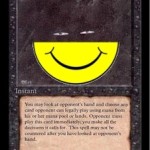By: Jared Yost
Currently we appear to be in the doldrums of the Magic finance sea. The trade winds haven’t yet guided our course towards buying into Theros staples, as the floor on most cards hasn’t been found yet. The winds also aren’t quite right yet to pursue other avenues of Magic financial interest, such as starting to acquire recently rotated Innistrad block staples or future Modern prospects. (Seriously Wizards, you stuck Modern season in the middle of summer?) Nothing is at the point where I feel comfortable acquiring or selling. It seems no matter which way I hold my compass I can’t find my way back to shore.
At times like these, some retrospection is a good idea. Looking back on past successes and failures may be a great way to find a path forward.
Success!
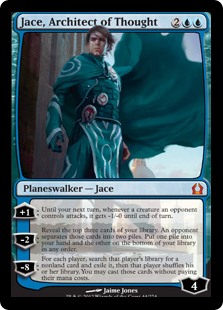
Jace, Architect of Thought
Some background – I started to seriously get into Magic finance back when Return to Ravnica first hit Standard. I wanted to know what was up with the crazy price swings of cards that at the time I didn’t fully understand.
Earlier in my Magic career, I never kept track of prices very closely – I just picked up cards when I needed them for decks. Over the years, due to dumb luck and the massive influx of players, the demand for the old cards that I never got around to trading away skyrocketed. I suddenly found myself with many cards that were two, three, sometimes four times more than what I originally bought them for. I found myself asking “What is this wizardry?”
I started researching Magic finance more earnestly because I wanted to understand what was going on and why these newer cards that I owned seemed to be going through such large price swings in such a short period of time, and also why my older staples seemed to always be trending upwards. Ever since, I’ve always kept up with the most recent trends on card prices because it fascinates me to no end. I stumbled upon a few websites like MTGPrice, and the rest is history.
Back to Jace – This is one of the first cards that I decided to acquire as many copies as I could rather than just one or two for collection purposes. I was able to pick up several Jace’s back when they were as low as $8.
After Jace’s huge crash, nobody wanted him – I was able to pick up copy after copy. I recently cashed out on half my stock for $23 each. I didn’t pull the trigger on selling off all of them because I felt that maybe I could get more for the remaining Jaces if they became really popular. I still may yet have that chance, however the recent duel deck announcement certainly makes that less likely. I’ll be looking to move the rest in the near future.

Blood Baron of Vizkopa
I also did well when I decided to target this card. I got in on Blood Baron when it was $8 this summer, and recently buylisted all my copies for $14 each. That is $6 profit per, which is fantastic as far as I’m concerned. I used the same logic here as I did with Jace, and this card also payed out welcome dividends.


Deathrite Shaman & Abrupt Decay
Both of these cards screamed “LEGACY!!!” to me, and I started grabbing them up as soon as they were spoiled. I was very bullish on Deathrite Shaman – so bullish, in fact, that I was preordering Deathrite Shamans at $4. I liked Deathrite so much that I was still picking them up when they already doubled to $7-$8 each. Both decisions turned out positive for me. As for Abrupt Decay, I waited for it to drop in price after the initial hype died down and then became bullish on it when it was $3-$4. My only regret is not picking up foil copies of either card when they were low.
Other Notables

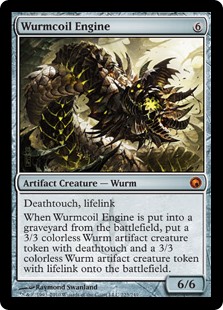

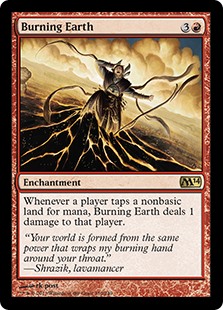
Ash Zealot – Buy in $1.25, Buylist @ $2.45
Wurmcoil Engine – Buy in $7.00, Buylist @ $10.50
Batterskull – Buy in $6.00, Buylist @ $9.50
Burning Earth – Buy in $1.00, Buylist @ $3.00
I wasn’t as bullish on these picks but they still paid out pretty well for me. I was able to get fairly good cash prices for these cards when they spiked (Ash Zealot & Burning Earth), or I held onto them for a while and then decided to buylist for a profit when it came time to liquidate (Wurmcoil Engine, Batterskull).
Failures, Misses, and Bad Calls

Nykthos, Shrine to Nyx
I had an idea about the power of this card because it reminded me of Cabal Coffers and how good that card is in a black deck. I decided to hold off because I didn’t know if devotion would be a thing or not in Standard.
Well, it was. I missed big with this land. I might still be able to buy in later after more product is opened, though I can’t foresee Nykthos ever dipping as low as $4 again.
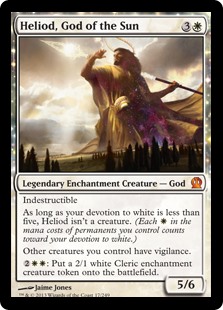
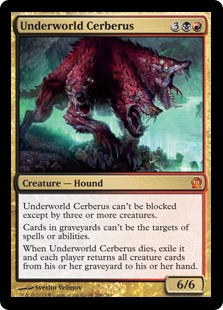
Heliod, God of the Sun & Underworld Cerberus
I was bullish on both of these cards shortly after the release of Theros. They have both gone down since I bought into them, and so far I am in the hole. At this point, I think my best bet is to continue sitting on them and hope they spike.
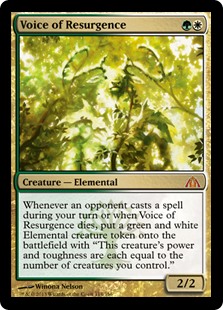
Voice of Resurgence
I thought that there was a lot of potential when Voice was first spoiled, and I spent a lot of time thinking about at least picking up a play set. I talked myself out of it, and suffice to say missed out.

Beck & Call
I was bullish on this card when it was $4. I started picking them up at that price, was astounded when they continued to drop, and started picking up even more once they hit $2. They are now less than $1, making this my biggest flop.
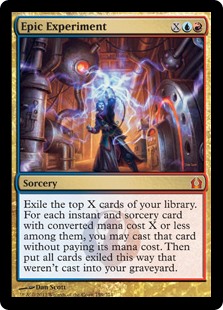
Epic Experiment
I started picking up a lot of these at $2 each because I felt that it had a lot of potential in Modern, with a possibility of also being good in Standard later on. My prediction so far has not come to pass, and I’m sitting on a lot of copies that are lower than what I got them for.
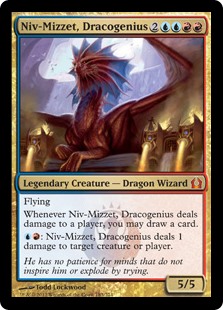
Niv-Mizzet, Dracogenius
Now at a measly $2, I was very bullish on Niv-Miz when Return to Ravnica prices had bottomed out. I bought in when they were $2.50, so I haven’t lost too much. At the end of the day they’re all still sitting in a box though, making this a loss, even if it isn’t a big one.
Lessons Learned
So, what have I learned about my endeavors with a year of experience? I’ll try to summarize for you:
Success Lessons
-
The common theme of my successes is that I carefully studied each of the cards and made notes of all the potential upside and downside that each had. Once I felt that I understood the pros and cons, I made an informed decision that each had a positive outlook and started picking them up accordingly.
-
One thing I want to be doing in the future is paying more attention to mythics rather than rares. Mythics provide the largest gains over time when their peak has been reached. I made some decent profits from Deathrite Shaman and Abrupt Decay, but those types of success are harder to realize.
-
When looking at rares, the card’s eternal playability is an important factor. When I saw Deathrite Shaman and Abrupt Decay, I knew that they could be good Standard cards and at the same time they would be even more amazing in other formats. I now take this heavily into consideration.
-
Capitalizing on format shakeups – When a format is being “shaken and stirred” so to speak, I’ve relied on my research and past experiences to help make the most of a changing format. This is why I recommended targeting aggro cards right before Theros released, because I knew cards like Ash Zealot would likely see an uptick in price due to the typical increase in aggressive strategies shortly after rotation.
Mistake Lessons
-
More research is required before diving too deeply into any given card. I bought into a lot of cards that weren’t proven and that didn’t have a power level that, in retrospect, I’ve noticed is clearly lacking.
-
While occasionally missed calls end up working out for other reasons, in the meantime I am stuck with cards that no one wants. I was taking on quite a bit of risk with some of my picks. I’m going to stay with more liquid cards in the future to try to mitigate risk.
-
I’ve learned the hard way about which factors actually make a card well-positioned. that isn’t to say that I won’t ever miss again, as surely there will be other errors in judgment in the future. Today though, I can say I am a much better evaluator of a card and its potential.
-
Crowdsourcing is a powerful tool. I need to learn how to better realize the many tools that are available for Magic finance in order to understand card trends and what the community chatter is about a card. It can be good to pick up a few copies on the advice of others who have much more experience with Magic finance, you know?
Still stuck at sea with my sails unfurled hoping for a breeze, I’ve used the time to learn about myself and a bit more about the workings of Magic finance. I hope that my personal musings on my own successes and failures will provide some guidance for you as you set your own course.
*Correction – In the comments for my article last week, it was noted that I incorrectly associated Hasbro with Wizards of the Coast in respect to my writing of Chronicles. Hasbro acquired Wizards in 1999 (from the Wikipedia page), whereas Chronicles was released in 1995. My reference to Hasbro was only in passing however it was an oversight on my part and I wanted to make sure I set the record straight. Sorry for any confusion! Hasbro did not influence Wizards choices in regards to Chronicles.








